![で – Marking Where and How an Action Happens in Japanese [JLPT N5]](http://hirakan.com/cdn/shop/articles/de-where-how-action-happens.jpg?v=1763264973&width=1100)
で – Marking Where and How an Action Happens in Japanese [JLPT N5]
Share
Quick Summary
- Meaning: で marks the location where an action happens or the means/tool/method used to do something.
- How to Use: Put で after a place or tool, before the action.
-
Example:
- 図書館で猫が新聞を読みます。
- Toshokan de neko ga shinbun o yomimasu.
- At the library, a cat reads the newspaper.
Overview
Use で to show the stage of an action (where something is done) and the means (how it is done). If an action happens somewhere, で marks that place. If you use a tool, language, vehicle, or method to do something, で marks that means.
Important: で is for actions. For simple existence like “there is/there are,” use に with verbs such as ある (aru, to exist) and いる (iru, to exist), not で.
Example:
- 日本語で猫と話します。
- Nihongo de neko to hanashimasu.
- I talk with a cat in Japanese.
Structure / Formation
Base Formulas
- Place + で + V
- N + で + V (tool / instrument)
- Vehicle + で + V
- Language + で + V
Place of Action (where something happens)
Put で after the place to show where an action takes place. Think: “at/in (place), do (action).”
- Place + で + V
Use に (not で) for existence or staying somewhere with ある (aru, to exist) and いる (iru, to exist).
Means / Tool / Method (how something is done)
Put で after what you use: a tool, language, or vehicle. It often translates as “with,” “by,” or “in.”
- N + で + V (tool)
- Vehicle + で + V (by vehicle)
- Language + で + V (in a language)
Example:
- おじいさんはロケットで月へ行きます。
- Ojiisan wa roketto de tsuki e ikimasu.
- Grandpa goes to the moon by rocket.
Usage Tips
Think “action = で, existence = に.” If someone does something in a place, use で. If someone or something simply is in a place, use に with ある (aru, to exist) or いる (iru, to exist).
Means can be many things. Tools (pen), vehicles (train), and languages (Japanese) all use で to show “by/with/in.”
Example Sentences
- 公園でパンダがギターをひきます。
- Kouen de panda ga gitaa o hikimasu.
- In the park, a panda plays guitar.
- はしでケーキを食べます。
- Hashi de keeki o tabemasu.
- I eat cake with chopsticks.
- ヘリコプターで学校へ行きません。
- Herikoputaa de gakkou e ikimasen.
- I don’t go to school by helicopter.
- 日本語でロボットと歌います。
- Nihongo de robotto to utaimasu.
- I sing with a robot in Japanese.
- 夢で先生に会いました。
- Yume de sensei ni aimashita.
- I met my teacher in a dream.
Quick Practice
(Answers and explanations are right under this section.)
Multiple-Choice
1. Choose the correct sentence: “I study at the library.”
- A. 図書館で勉強します。(Toshokan de benkyou shimasu.)
- B. 図書館に勉強します。(Toshokan ni benkyou shimasu.)
- C. 図書館と勉強します。(Toshokan to benkyou shimasu.)
- D. 勉強しますで図書館。(Benkyou shimasu de toshokan.)
2. Choose the correct sentence: “I cut bread with a knife.”
- A. ナイフでパンを切ります。(Naifu de pan o kirimasu.)
- B. ナイフにパンを切ります。(Naifu ni pan o kirimasu.)
- C. ナイフとパンを切ります。(Naifu to pan o kirimasu.)
- D. ナイフやパンを切ります。(Naifu ya pan o kirimasu.)
3. Choose the correct sentence: “I don’t go to Tokyo by bicycle.”
- A. 自転車で東京へ行きません。(Jitensha de Toukyou e ikimasen.)
- B. 自転車に東京へ行きません。(Jitensha ni Toukyou e ikimasen.)
- C. 自転車と東京へ行きません。(Jitensha to Toukyou e ikimasen.)
- D. 自転車や東京へ行きません。(Jitensha ya Toukyou e ikimasen.)
4. Choose the correct sentence: “In English, the alien sings.”
- A. 英語で宇宙人は歌います。(Eigo de uchuujin wa utaimasu.)
- B. 英語に宇宙人は歌います。(Eigo ni uchuujin wa utaimasu.)
- C. 宇宙人は歌いますで英語。(Uchuujin wa utaimasu de eigo.)
- D. 英語と宇宙人は歌います。(Eigo to uchuujin wa utaimasu.)
5. Choose the correct sentence: “There is water in the cup.”
- A. コップに水があります。(Koppu ni mizu ga arimasu.)
- B. コップで水があります。(Koppu de mizu ga arimasu.)
- C. コップと水があります。(Koppu to mizu ga arimasu.)
- D. コップや水があります。(Koppu ya mizu ga arimasu.)
Spot-the-Error
6. One sentence has a で/に mistake. Which one is wrong?
- A. 居酒屋で寿司を食べます。(Izakaya de sushi o tabemasu.)
- B. 学校に友だちと遊びます。(Gakkou ni tomodachi to asobimasu.)
- C. 部屋で音楽を聞きました。(Heya de ongaku o kikimashita.)
7. One sentence has a で/に mistake. Which one is wrong?
- A. 冷蔵庫にケーキがあります。(Reizouko ni keeki ga arimasu.)
- B. 公園で犬がいます。(Kouen de inu ga imasu.)
- C. バスで駅へ行きます。(Basu de eki e ikimasu.)
Translation
8. Translate into Japanese using で: “At the station, I wait for my friend.”
9. Translate into Japanese using で: “I go to school by bus.”
10. Translate into Japanese using で: “In Japanese, I write a letter with a pencil.”
Answers and Explanations
- A. 図書館で勉強します。(Toshokan de benkyou shimasu.) — で marks the location where the action (studying) happens.
- A. ナイフでパンを切ります。(Naifu de pan o kirimasu.) — で marks the tool/means used to do the action.
- A. 自転車で東京へ行きません。(Jitensha de Toukyou e ikimasen.) — Vehicles take で to show “by/with.”
- A. 英語で宇宙人は歌います。(Eigo de uchuujin wa utaimasu.) — Languages use で to express “in (a language).”
- A. コップに水があります。(Koppu ni mizu ga arimasu.) — Existence uses に with あります/います, not で.
- B. 学校に友だちと遊びます。(Gakkou ni tomodachi to asobimasu.) — 遊びます is an action, so the place should be marked by で, not に.
- B. 公園で犬がいます。(Kouen de inu ga imasu.) — います is existence, so use に (公園に) instead of で.
- 駅で友だちを待ちます。(Eki de tomodachi o machimasu.) — で marks the place where you wait.
- バスで学校へ行きます。(Basu de gakkou e ikimasu.) — で shows the vehicle/means of going.
- 日本語でえんぴつで手紙を書きます。(Nihongo de enpitsu de tegami o kakimasu.) — You can stack で to mark both language (means) and tool (means).
Related Posts
-
![か – Forming Questions and Saying “Or” in Japanese [JLPT N5]](//hirakan.com/cdn/shop/articles/ka-questions.jpg?v=1763787134&width=170)
か – Forming Questions and Saying “Or” in Japanese [JLPT N5]
Quick Summary Meaning: The particle か turns a sentence into a question, or can mean “or” when choosing between thin...
-
![も – Saying “Also” and “Too” in Japanese [JLPT N5]](//hirakan.com/cdn/shop/articles/mo-also-too_99f908e6-78d0-4f82-8319-391ef42764bc.jpg?v=1763787251&width=170)
も – Saying “Also” and “Too” in Japanese [JLPT N5]
Quick Summary Meaning: The particle も means “also,” “too,” or “even.” It shows that something is the same as someth...
-
![と – Linking 'And', 'With', and Quotations in Japanese [JLPT N5]](//hirakan.com/cdn/shop/articles/to-and-with-quotation.jpg?v=1763265110&width=170)
と – Linking 'And', 'With', and Quotations in Japanese [JLPT N5]
Quick Summary Meaning: と links things like “A and B,” marks doing something with someone, and shows a quotation (“…,”...
-
![へ – Marking Direction ‘Toward’ in Japanese [JLPT N5]](//hirakan.com/cdn/shop/articles/he-marking-direction.jpg?v=1762667986&width=170)
へ – Marking Direction ‘Toward’ in Japanese [JLPT N5]
Quick Summary Meaning: The particle へ marks direction or “toward” a place or person. It points where something is hea...
-
![に – Marking Time, Destinations, and Recipients in Japanese [JLPT N5]](//hirakan.com/cdn/shop/articles/ni-marking-destination.jpg?v=1762667846&width=170)
に – Marking Time, Destinations, and Recipients in Japanese [JLPT N5]
Quick Summary Meaning: The particle に marks a point in time (at/on), a destination you reach (to/into), or a target/r...
-
![の – Possession and Noun Linking in Japanese [JLPT N5]](//hirakan.com/cdn/shop/articles/no-possession-and-noun-linking.jpg?v=1761961297&width=170)
の – Possession and Noun Linking in Japanese [JLPT N5]
Quick Summary Meaning: Links two nouns to show possession, belonging, or description. Often reads as “’s” or “of....
-
![を – Marking the Direct Object in Japanese [JLPT N5]](//hirakan.com/cdn/shop/articles/o-direct-object.jpg?v=1761960990&width=170)
を – Marking the Direct Object in Japanese [JLPT N5]
Quick Summary Meaning: を marks the direct object — the thing that receives the action of a verb. It’s pronounced ...
-
![が – Marking the Subject ('Who/What') in Japanese [JLPT N5]](//hirakan.com/cdn/shop/articles/ga-subject-marker_60f30f70-6ca5-47ee-9a00-3646195d7d3c.jpg?v=1761386355&width=170)
が – Marking the Subject ('Who/What') in Japanese [JLPT N5]
Quick Summary Meaning: The particle が marks the subject of a sentence and highlights new or focused information (an...
-
![は (wa) – Topic Marker and Contrast in Japanese [JLPT N5]](//hirakan.com/cdn/shop/articles/wa-topic-marker.jpg?v=1761385996&width=170)
は (wa) – Topic Marker and Contrast in Japanese [JLPT N5]
Quick Summary Meaning: Marks the topic of the sentence — what you’re talking about. Often feels like “as for...” in E...
-
![じゃない・ではありません – Expressing 'Is/Was Not' in Japanese [JLPT N5]](//hirakan.com/cdn/shop/articles/janai-dehaarimasen_2594963b-531e-4f4d-a9b0-361010e0a720.jpg?v=1760865884&width=170)
じゃない・ではありません – Expressing 'Is/Was Not' in Japanese [JLPT N5]
Quick Summary Meaning: The negative of the copula “to be.” Say “is not” or “was not” with nouns and na-adjectives. Ho...
-
![だ・です/だった・でした – Saying ‘to be’ in Japanese [JLPT N5]](//hirakan.com/cdn/shop/articles/da-desu-datta-deshita_58bbc732-53fd-48da-83c7-4e477e7cc0b2.jpg?v=1760864506&width=170)
だ・です/だった・でした – Saying ‘to be’ in Japanese [JLPT N5]
Quick Summary Meaning: The Japanese copula — the basic “to be.” It links a topic to a noun or a na-adjective to state...
-

Common Japanese Onomatopoeia: Essential Words You’ll Hear Everywhere
If you spend any time in Japan, you’ll hear onomatopoeia everywhere: on TV, in everyday conversations, in manga, and ...
-

How to Say “To Increase” and “To Decrease” in Japanese: With Examples
You've noticed there are multiple ways to say “to increase” or "to decrease" in Japanese. Between transitive and intr...
-

How to Say "Police Officer" in Japanese: Common Terms and Slang
There are several ways to say "police officer" in Japanese, and each one has a different level of formality and usage...
-
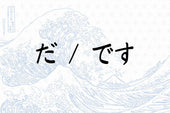
Understanding だ (da) and です (desu) in Japanese: Meaning and Usage
When learning Japanese, one of the first things you’ll come across is だ (da) and です (desu). These words don’t have a ...
-
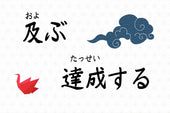
Difference Between 及ぶ (およぶ) and 達成する (たっせいする)
Both 及ぶ and 達成する can relate to "reaching" or "achieving" something, but they have distinct nuances and usage contexts...
-

JLPT N5 Study Guide: A Beginner's Roadmap to Acing the Test
If you’ve just started learning Japanese and are aiming to ace the JLPT N5, you’ll need a solid study guide to help y...
-

Beginner's Guide to Japanese Particles: Learn the Basics
TL;DR: Japanese particles are crucial for structuring sentences, acting like conjunctions or prepositions in English...
-

JLPT N5 Vocabulary List - All 748 Words You Need to Know
Vocabulary is the foundation of any language, and Japanese is no exception. The more you know, the better. Over time ...
-

JLPT N4 Kanij List - All 176 Characters You Need To Know
After mastering the JLPT N5 kanji, you're ready to take your Japanese kanji game to the next level. JLPT N4. Let's go...
-
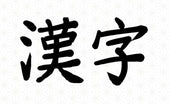
Kanji For Kanji - 漢字
Inception time. Which kanji compose the kanji of "kanji"? The kanji for "kanji" is actually pretty straightforward. I...
-

How to Memorize Katakana Easily: 9 Tips for Beginners
For those diving into Japanese, mastering hiragana and katakana is the first significant challenge. While hiragana o...
-

Complete Hiragana and Katakana Chart With All 112 Characters
The very first step for everybody who wants to learn Japanese is to study the hiragana and katakana chart (before lea...
-
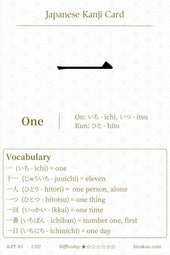
JLPT N5 Kanji: Kanji For One 一 (ichi)
Probably one the most simple kanji to remember, the kanji for 'one' is simply written '一'. Let's see its readings and...
-
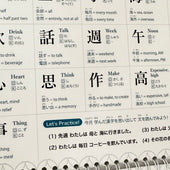
How Long Does It Take to Learn Kanji? A Beginner's Guide
Ask any Japanese student what's the scariest part of learning the language, and they'll say kanji. And they're righ...
-

Is it Necessary to Learn Kanji? The Last Answer You'll Ever Need
Many beginners in Japanese wonder whether they should really learn kanji. I know this, because I also wondered when s...
-

How Long Does it Take to Learn Hiragana and Katakana?
As a beginner in Japanese, your first step is diving into the alphabets of Hiragana and Katakana. These are the build...
-

13 Best YouTube Channels to Learn Japanese, From Beginner to Intermediate
YouTube can be an incredible resource for learning Japanese. And best of all, it's free. So we've compiled a list of ...
-
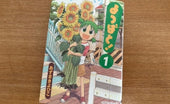
Top 10 Manga for Japanese Language Learners: From Beginners to Intermediates!
If you're learning Japanese, chances are you're interested in manga. So instead of reading texts about Tanaka-san s...
-
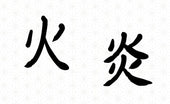
Kanji for 'Fire' in Japanese: 火 or 炎?
Welcome to our enlightening exploration of Japanese kanji! Today, we're igniting our understanding of a primal force ...
-

The Complete Guide to Country Names in Japanese: Say and Pronounce Them Right!
Whether you're planning a trip, learning Japanese, or just curious about how different countries are represented in a...
-
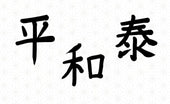
Kanji for Peace: 平, 和, 泰 - The Symbols of Harmony
You might be wondering what are the Japanese symbols for 'Peace'. In this article, we're diving deep into this univer...
-
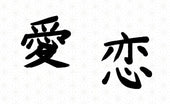
Kanji for 'Love': How and When to Use 愛 and 恋
Welcome to our journey into the world of Japanese kanji! Today, we're delving into one of the most heartwarming and p...
-
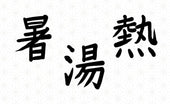
Kanji for 'Hot' in Japanese: 暑, 湯, and 熱 - A Comprehensive Guide
Welcome to our journey into the world of Japanese kanji! Today, we're going to delve into an exciting and essential c...
-
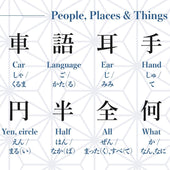
JLPT N5 Kanji List - All 112 Characters You Need To Know
Below we've listed all 112 JLPT N5 level kanji along with their English meaning, readings, and two accompanying vocab...

![か – Forming Questions and Saying “Or” in Japanese [JLPT N5]](http://hirakan.com/cdn/shop/articles/ka-questions.jpg?v=1763787134&width=170)
![も – Saying “Also” and “Too” in Japanese [JLPT N5]](http://hirakan.com/cdn/shop/articles/mo-also-too_99f908e6-78d0-4f82-8319-391ef42764bc.jpg?v=1763787251&width=170)
![と – Linking 'And', 'With', and Quotations in Japanese [JLPT N5]](http://hirakan.com/cdn/shop/articles/to-and-with-quotation.jpg?v=1763265110&width=170)
![へ – Marking Direction ‘Toward’ in Japanese [JLPT N5]](http://hirakan.com/cdn/shop/articles/he-marking-direction.jpg?v=1762667986&width=170)
![に – Marking Time, Destinations, and Recipients in Japanese [JLPT N5]](http://hirakan.com/cdn/shop/articles/ni-marking-destination.jpg?v=1762667846&width=170)
![の – Possession and Noun Linking in Japanese [JLPT N5]](http://hirakan.com/cdn/shop/articles/no-possession-and-noun-linking.jpg?v=1761961297&width=170)
![を – Marking the Direct Object in Japanese [JLPT N5]](http://hirakan.com/cdn/shop/articles/o-direct-object.jpg?v=1761960990&width=170)
![が – Marking the Subject ('Who/What') in Japanese [JLPT N5]](http://hirakan.com/cdn/shop/articles/ga-subject-marker_60f30f70-6ca5-47ee-9a00-3646195d7d3c.jpg?v=1761386355&width=170)
![は (wa) – Topic Marker and Contrast in Japanese [JLPT N5]](http://hirakan.com/cdn/shop/articles/wa-topic-marker.jpg?v=1761385996&width=170)
![じゃない・ではありません – Expressing 'Is/Was Not' in Japanese [JLPT N5]](http://hirakan.com/cdn/shop/articles/janai-dehaarimasen_2594963b-531e-4f4d-a9b0-361010e0a720.jpg?v=1760865884&width=170)
![だ・です/だった・でした – Saying ‘to be’ in Japanese [JLPT N5]](http://hirakan.com/cdn/shop/articles/da-desu-datta-deshita_58bbc732-53fd-48da-83c7-4e477e7cc0b2.jpg?v=1760864506&width=170)























